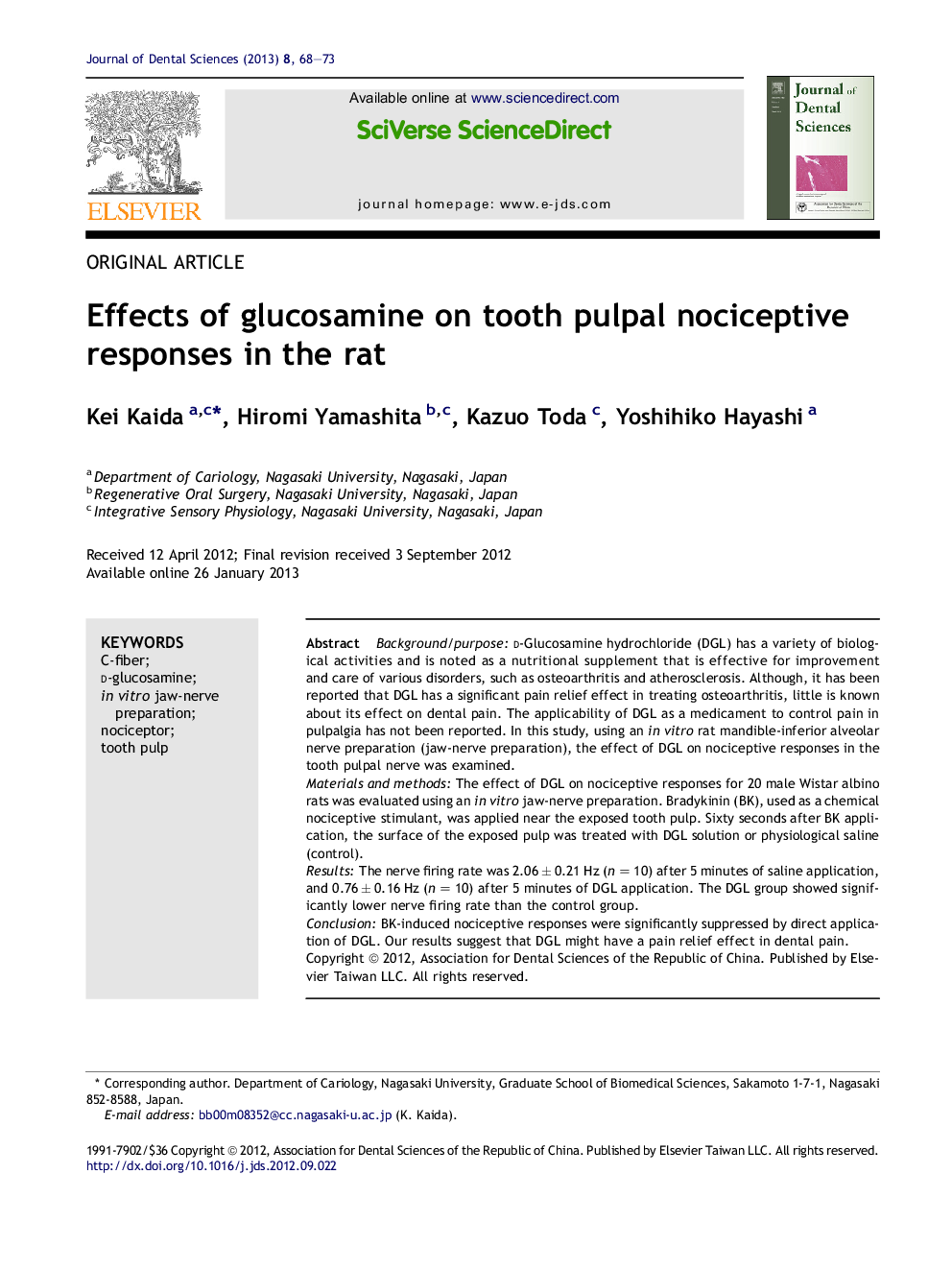| Article ID | Journal | Published Year | Pages | File Type |
|---|---|---|---|---|
| 3145643 | Journal of Dental Sciences | 2013 | 6 Pages |
Background/purposed-Glucosamine hydrochloride (DGL) has a variety of biological activities and is noted as a nutritional supplement that is effective for improvement and care of various disorders, such as osteoarthritis and atherosclerosis. Although, it has been reported that DGL has a significant pain relief effect in treating osteoarthritis, little is known about its effect on dental pain. The applicability of DGL as a medicament to control pain in pulpalgia has not been reported. In this study, using an in vitro rat mandible-inferior alveolar nerve preparation (jaw-nerve preparation), the effect of DGL on nociceptive responses in the tooth pulpal nerve was examined.Materials and methodsThe effect of DGL on nociceptive responses for 20 male Wistar albino rats was evaluated using an in vitro jaw-nerve preparation. Bradykinin (BK), used as a chemical nociceptive stimulant, was applied near the exposed tooth pulp. Sixty seconds after BK application, the surface of the exposed pulp was treated with DGL solution or physiological saline (control).ResultsThe nerve firing rate was 2.06 ± 0.21 Hz (n = 10) after 5 minutes of saline application, and 0.76 ± 0.16 Hz (n = 10) after 5 minutes of DGL application. The DGL group showed significantly lower nerve firing rate than the control group.ConclusionBK-induced nociceptive responses were significantly suppressed by direct application of DGL. Our results suggest that DGL might have a pain relief effect in dental pain.
